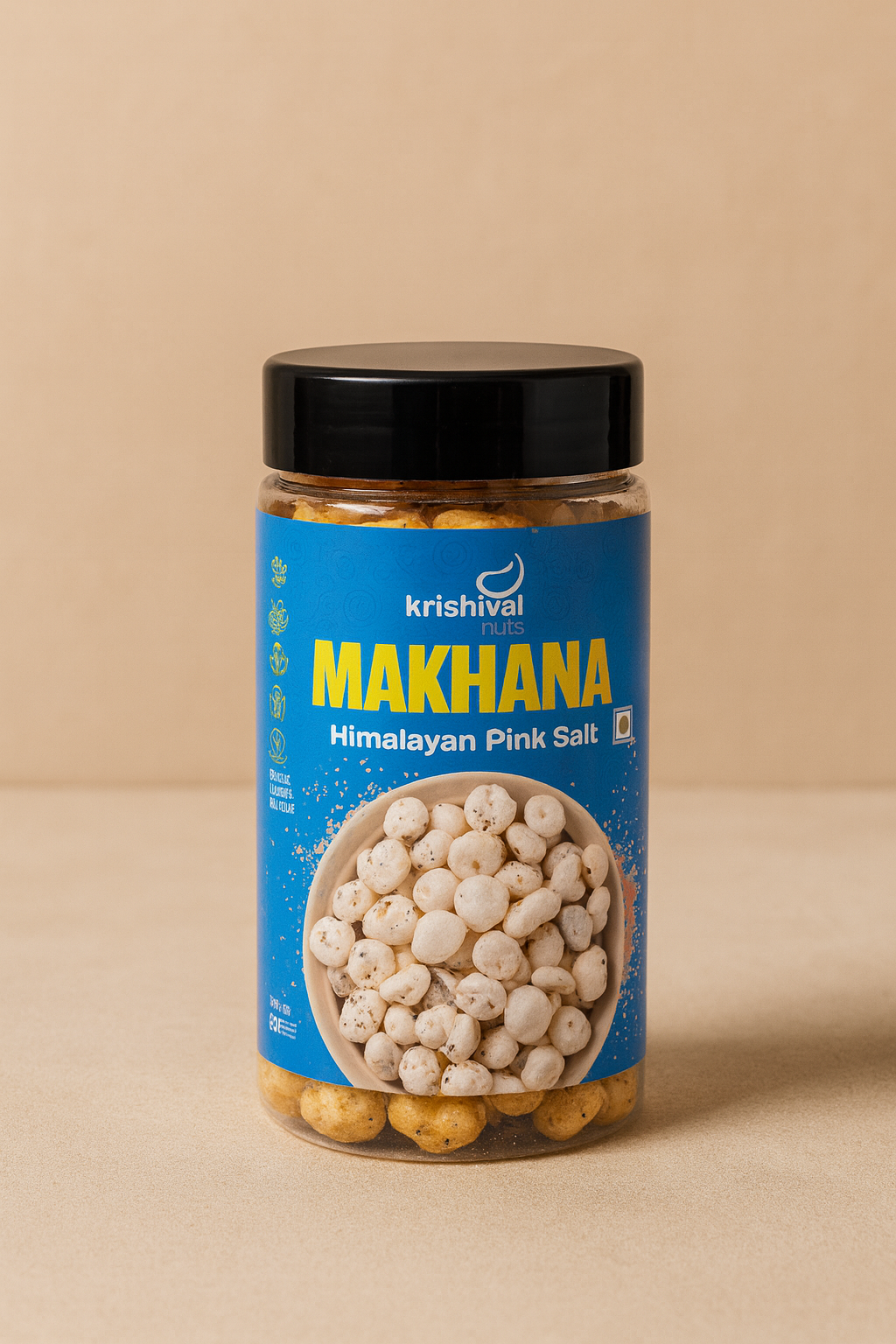Metabolism plays a vital role in our overall health, influencing everything from energy levels to weight management. It refers to the processes through which our body converts food into energy, and maintaining a healthy metabolism is key to sustaining optimal body functions. As we look for ways to boost metabolism and support healthy energy expenditure, certain foods, such as hazelnuts and almonds, stand out for their nutritional power.
Hazelnuts are packed with healthy fats, fiber, and antioxidants, making them a great choice for improving metabolic function. They are particularly high in monounsaturated fats, which help increase energy expenditure and promote fat burning. Almonds, similarly, are rich in healthy fats, protein, and fiber, which not only support a healthy metabolism but also keep you feeling full and satisfied for longer periods. Both nuts are loaded with vitamins and minerals, including magnesium and vitamin E, which further support metabolic health and energy production.
These nuts are rich in essential nutrients that promote metabolic health, offering a combination of healthy fats, fiber, protein, and antioxidants that help regulate energy production, improve fat burning, and support overall wellness. In this blog, we will explore how hazelnuts and almonds can improve your metabolism, their individual health benefits, and how you can easily incorporate them into your diet to support better metabolic function.
Table of Contents
- Introduction
- The Role of Nuts in Metabolic Health
- Hazelnuts: Metabolic Benefits and Nutritional Profile
- Almonds: Boosting Metabolism Naturally
- Comparing Hazelnuts and Almonds for Metabolic Health
- How to Incorporate Hazelnuts and Almonds into Your Diet
- Potential Considerations and Precautions
- Conclusion
- Frequently Asked Questions
The Role of Nuts in Metabolic Health
Nuts like hazelnuts and almonds offer more than just a satisfying crunch; they are packed with essential nutrients that directly impact metabolic health. These nuts are particularly beneficial for boosting energy expenditure, improving fat metabolism, and maintaining overall wellness.
Key Nutrients That Support Metabolism
Both hazelnuts and almonds contain a variety of nutrients that play a crucial role in enhancing metabolism. Hazelnuts are rich in healthy monounsaturated fats, which help regulate fat metabolism and promote energy expenditure. Almonds, on the other hand, are an excellent source of both protein and fiber, which are essential for boosting metabolic rate and maintaining stable blood sugar levels. Together, these nuts offer a balanced combination of nutrients that support optimal metabolism.
How Healthy Fats Influence Energy Expenditure
Hazelnuts are an excellent source of monounsaturated fats, which have been shown to increase thermogenesis, the process through which the body burns calories to generate heat. These healthy fats in hazelnuts not only help improve fat burning but also provide sustained energy. Almonds, rich in omega-3 fatty acids, also contribute to a higher rate of fat oxidation, helping your body burn fat more efficiently. By including these nuts in your diet, you can help enhance your energy expenditure and improve your metabolism.
The Impact of Protein and Fiber
Both hazelnuts and almonds are high in fiber, which plays a crucial role in digestion and maintaining metabolic health. Fiber helps slow the absorption of sugar in the bloodstream, preventing spikes in blood sugar and improving insulin sensitivity. Almonds, being rich in protein, also contribute to the thermic effect of food (TEF), which increases the number of calories your body burns during digestion. Together, protein and fiber from these nuts help regulate blood sugar levels, reduce hunger, and improve fat metabolism.
Incorporating hazelnuts and almonds into your diet can significantly support your metabolism and provide sustained energy throughout the day.
Hazelnuts: Metabolic Benefits and Nutritional Profile
Hazelnuts are packed with essential nutrients that support metabolic function, including healthy fats, fiber, vitamins, and minerals. Rich in monounsaturated fats, they help increase good cholesterol levels, reduce inflammation, and provide sustained energy. Hazelnuts are an excellent source of vitamin E, an antioxidant that protects the body’s cells from oxidative damage and inflammation. The presence of manganese in hazelnuts supports the enzymatic processes that are crucial for energy production and metabolism. Additionally, their high fiber content promotes digestive health, helping regulate blood sugar levels and reduce the risk of metabolic diseases.
Hazelnuts also contain B vitamins, such as B6 and folate, which are vital for the conversion of food into energy. The combination of these nutrients makes hazelnuts a perfect food for maintaining a healthy metabolism, improving fat oxidation, and supporting overall metabolic health.
Almonds: Boosting Metabolism Naturally
Almonds are another excellent nut that can help enhance metabolic function. High in healthy fats, particularly monounsaturated fats, almonds contribute to reducing unhealthy cholesterol levels and improving heart health. These fats, along with their significant protein content, help boost metabolism by promoting the thermogenic process, which burns fat to produce heat. Almonds also regulate blood sugar levels, making them particularly beneficial for individuals with insulin resistance or type 2 diabetes.
The fiber content in almonds helps maintain satiety, reducing overeating and promoting healthier weight management. Additionally, the vitamin E in almonds acts as an antioxidant, protecting cells from oxidative stress, while magnesium plays a crucial role in energy production and muscle function, further supporting metabolic efficiency.
Comparing Hazelnuts and Almonds for Metabolic Health
Both hazelnuts and almonds offer unique metabolic benefits, but they also share some overlapping advantages. Hazelnuts provide a higher amount of manganese, which aids in energy production and metabolic efficiency, making them an excellent choice for supporting general metabolic function. Almonds, on the other hand, have a higher protein and fiber content, which contributes to improved satiety and better blood sugar regulation.
In terms of heart health, both nuts shine, though almonds may have a slight edge due to their higher content of magnesium, which is beneficial for muscle function and metabolic health. Hazelnuts offer more antioxidants, which help reduce inflammation and improve oxidative stress markers, making them a better choice for anti-aging and disease prevention.
Ultimately, both nuts are excellent additions to a metabolism-boosting diet, and combining them can provide a wider range of metabolic and health benefits. Depending on specific dietary needs, either nut can be a valuable part of your daily nutrition.
How to Incorporate Hazelnuts and Almonds into Your Diet
Incorporating hazelnuts and almonds into your diet is easy and enjoyable. Here are a few ideas:
-
Snack on Nuts:A small handful of hazelnuts makes for a convenient and healthy snack. You can mix both nuts together for an added nutrient boost.
-
Smoothies: Blend hazelnuts and almonds into smoothies for a creamy texture and to increase the protein content. Pair with fruits like berries or bananas to create a metabolism-friendly drink.
-
Nut Butters: Both hazelnuts and almonds can be turned into nut butter. Spread almond or hazelnut butter on toast, pancakes, or even use it as a dip for fruits and vegetables.
- Salads and Meals: Add chopped almonds and hazelnuts to salads, oatmeal, or yogurt to enhance texture and nutrition. You can also include them in baked goods for added flavor and crunch.
Potential Considerations and Precautions
While hazelnuts and almonds are generally safe and beneficial for most people, there are a few considerations to keep in mind:
-
Allergies and Sensitivities: Both hazelnuts and almonds are common allergens. People with nut allergies should avoid these nuts entirely. Always check for potential allergic reactions before consuming them in larger quantities.
-
Calorie Content and Portion Control: Nuts are calorie-dense, so portion control is important. Overconsumption can lead to unwanted weight gain. A typical serving is about 1 ounce, which is roughly 23 almonds or 12 hazelnuts.
- Raw vs. Roasted Nuts: While both raw and roasted hazelnuts and almonds offer health benefits, raw nuts typically retain more nutrients. Roasting can reduce certain vitamins and antioxidants. It’s best to opt for dry-roasted nuts without added oils or salt for a healthier option.
Conclusion
Incorporating hazelnuts and almonds into your diet can significantly improve your metabolic health by enhancing energy production, supporting fat oxidation, and regulating blood sugar levels. These nuts are rich in healthy fats, fiber, vitamins, and antioxidants, making them an excellent choice for anyone looking to boost their metabolism naturally. For the best quality hazelnuts and almonds, Krishival offers premium products that ensure you get the highest nutritional benefits to support your metabolic health.
Frequently Asked Questions
-
How many hazelnuts or almonds should I eat daily for metabolism?
A typical serving size is about 1 ounce, which equals roughly 12 hazelnuts or 23 almonds. This serving provides a good balance of healthy fats, fiber, and protein to support metabolism.
-
Can these nuts help with weight loss?
Yes, almonds and hazelnuts can aid in weight loss by improving satiety due to their fiber and protein content. Eating them in moderation as part of a balanced diet can prevent overeating and promote healthy fat metabolism.
-
Are roasted or raw nuts better for metabolism?
Raw nuts retain more nutrients than roasted ones, particularly antioxidants. However, roasted nuts without added oils or salt still provide significant metabolic benefits. Raw is typically the healthier option.
-
Do hazelnuts and almonds help regulate blood sugar?
Both nuts help stabilize blood sugar levels. Almonds, in particular, are known for their ability to improve insulin sensitivity, making them an excellent choice for those managing blood sugar levels.
-
Are these nuts suitable for people with diabetes?
Yes, both hazelnuts and almonds can be beneficial for people with diabetes. Their high fiber content helps slow sugar absorption, preventing rapid spikes in blood sugar levels.
-
Can nuts slow down metabolism if eaten in excess?
Overeating nuts, especially high-calorie ones like almonds and hazelnuts, can lead to weight gain, which may indirectly affect metabolism. It’s important to consume them in moderation to avoid excess calorie intake.
-
What is the best time of day to eat hazelnuts and almonds?
There is no specific time of day to eat hazelnuts or almonds. However, consuming them as a snack in the afternoon can help curb hunger and provide an energy boost. They also work well in breakfast dishes.
-
Are there any side effects of eating these nuts daily?
While nuts are generally safe, eating them in excess can lead to digestive discomfort due to their high fat and fiber content. People with nut allergies should avoid them completely.
-
Can children and seniors benefit from these nuts for metabolism?
Yes, both children and seniors can benefit from the metabolic advantages of hazelnuts and almonds. These nuts provide essential nutrients needed for growth, energy, and overall health across all age groups.
-
How do hazelnuts and almonds compare to other nuts for metabolic health?
Hazelnuts and almonds are among the best nuts for boosting metabolism, with hazelnuts providing more antioxidants and almonds offering higher fiber and protein content. They both outperform other nuts like cashews and peanuts in terms of metabolic support.











